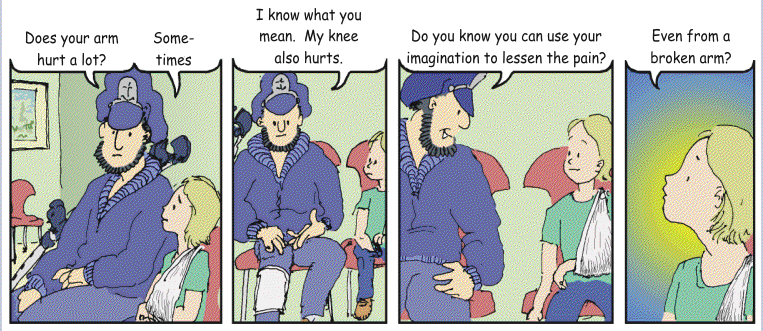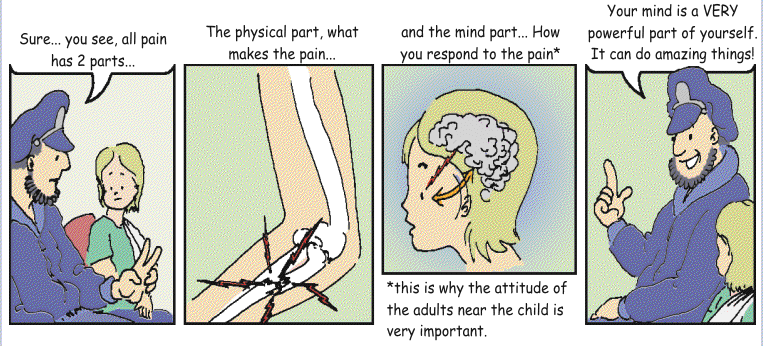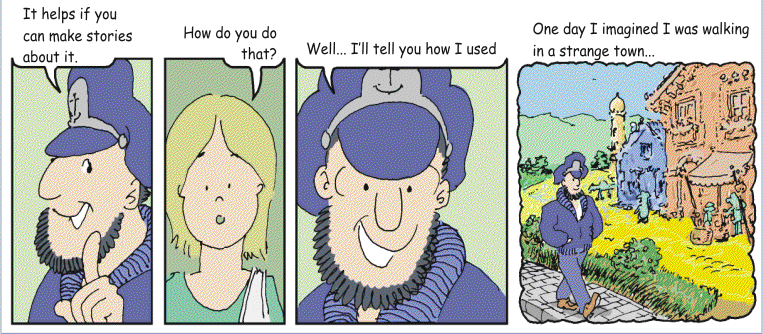 |
Pain, what a hassle!
In March of 1999 I had a bicycle accident that resulted in a broken leg. As I was lying on the grass, waiting for the
ambulance to come take me to the hospital, the initial numbness in my knee started to wear out and I began to feel
pain. Instinctively, I began to use yoga techniques to relax the muscle around the injured area.
During Yoga exercises, one stretches to the maximum extent possible, then relaxes the muscles and surprise! The
pain one was feeling from the streching earlier starts to go away. So every time I felt the muscles begin to tense up around the knee, I went
directly to the relaxing part of the yoga exercises. It worked pretty well, and I didn’t require any sedatives until the
operation began.
Later, during my recovery, it occurred to me that it might be a useful technique for kids (or anyone
else for that matter) to learn because it is so simple to do.
Since I’d previously drawn a cartoon strip for magazines, I already had a character to tell the story, and I set about to
write one.
When I presented the sketcher to Lies Meijer-Vonkeman, my physiotherapist, she was pleasantly surprised by my
work. It so happened that she was graduating from the Nederland Academi voor Psychotherpie and one of the techniques she had
learned was the use of metaphors to assist in self recovery. They were teaching children to use their own minds to help
themselves recover more easily. It also could help reduce some of the emotional stress that they might be suffering
from the injury.
I also want to thank Jan van der Weide and his daughter Sanne van der Weide for their thoughtful observations and
advice. I offer this story in the hope that it may help others to pass through difficult episodes, and that they may see
some of their own powers of recovery.
Sincerely,
Bob Ocegueda,
IJlst, The Netherlands, 2000
|
 |
| |
Statement from Dr. Lies Meijer-Vonkeman:
PAIN (both, physical and psychological, in the life of children)
Coping with pain is a very important issue in the life of a child (just like handling anxiety and fear).
The way a child experiences pain is mostly dependant on how grownups react when a child is suffering from pain.
Adults tend to impose their own way of “how to handle pain” on children, instead of making it easier for them to find their
own way to cope.
The child therefore, will react in a sort of “learned response”. Children tend to want to please their parents and
educators by being cooperative and behaving as they are taught. Both, underestimating and overreacting to the
child’s pain will affect this behavior in the child.
More rewarding in handling pain would be:
· Acknowledge the pain (it is there, don’t deny it)
· Inquire from the child about the pain (“What do you think will make it better?”, “Who can be of any help?”)
· Teach the child to be responsible for his own pain and how to fight it. Don’t overrule the feelings of the child by
your own fears.
Lies Meijer-Vonkeman, children therapist,
children physiotherapist.
IJlst, The Netherlands, 2000 |
|





